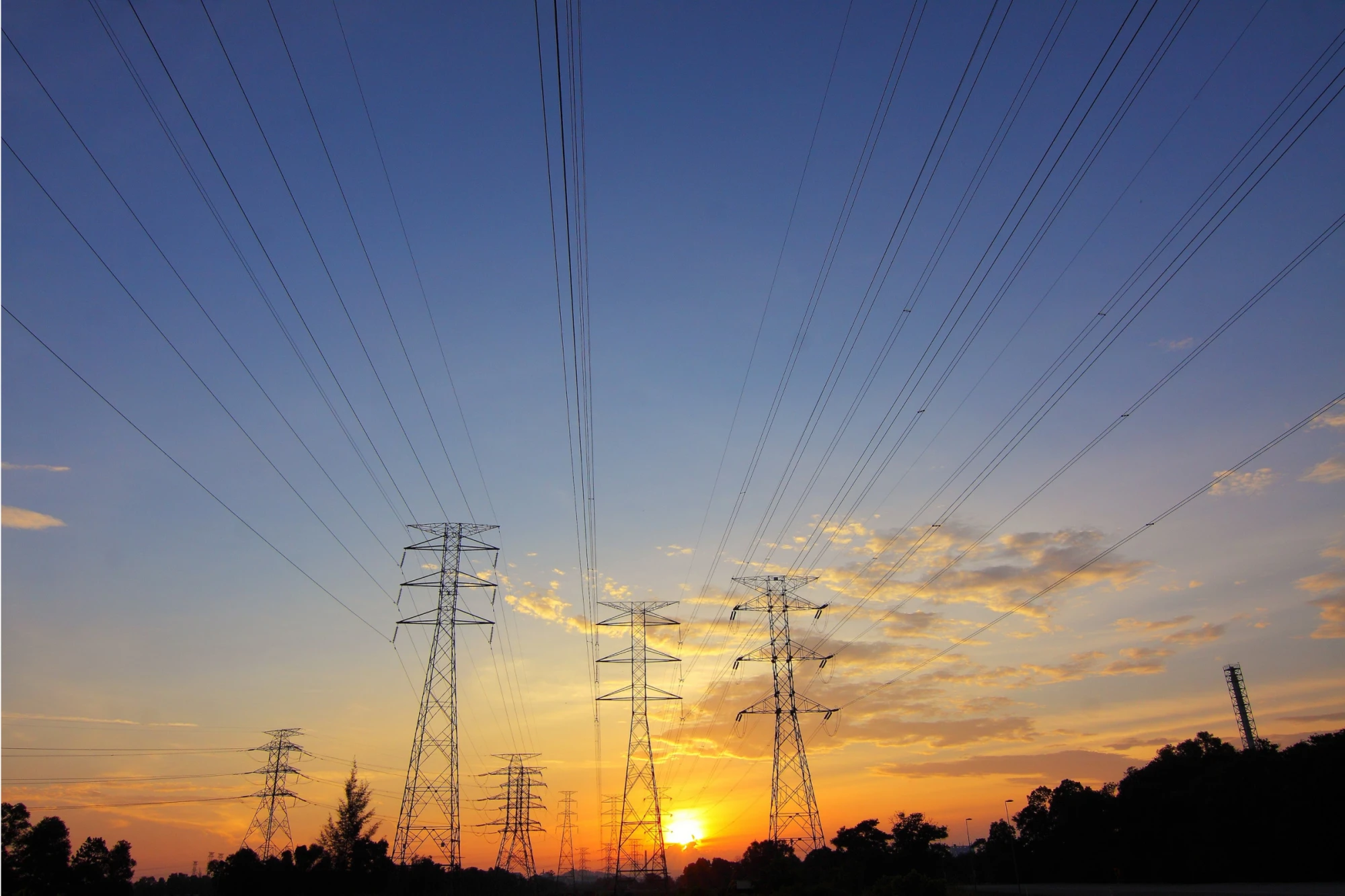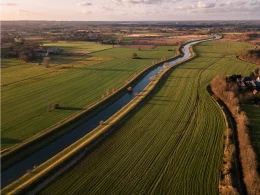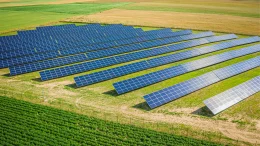
Our Approach to Energy Efficiency
Throughout our facilities, our teams work to identify best practices for energy efficiency that we embed into our business operations — including converting to LED lighting, improving fleet fuel efficiency in our transportation units, optimizing refrigeration and steam operations, covering anaerobic wastewater lagoons for biogas collection, and more. To date, twenty of our facilities use biogas as a renewable energy source, and 100% of the electricity that our Pilgrim's Europe Pork and Pilgrim's Europe Prepared Foods facilities source is renewable. In 2024, 21.1% of our indirect energy came from renewable sources across our operations.
Pilgrim’s Global decreased total energy use intensity by 6.3% and fuel use intensity by 10.1% from 2019 to 2024. Our commitment to reach 60% renewable electricity by 2030 will continue to be our focus as we work to reduce energy consumption throughout our operations.
We partnered with local utility providers and third-party energy consultants to identify energy savings opportunities across multiple Pilgrim’s U.S. facilities. This process also included an audit of our routing operations and recommendations for best practices to reduce energy consumption. We are continuing to partner with local utility providers and engage consultants on energy opportunities.
Our Approach to Energy Efficiency
Throughout our facilities, our teams work to identify best practices for energy efficiency that we embed into our business operations — including converting to LED lighting, improving fleet fuel efficiency in our transportation units, optimizing refrigeration and steam operations, covering anaerobic wastewater lagoons for biogas collection, and more. To date, twenty of our facilities use biogas as a renewable energy source, and 100% of the electricity that our Pilgrim's Europe Pork and Pilgrim's Europe Prepared Foods facilities source is renewable. In 2024, 21.1% of our indirect energy came from renewable sources across our operations.
Pilgrim’s Global decreased total energy use intensity by 6.3% and fuel use intensity by 10.1% from 2019 to 2024. Our commitment to reach 60% renewable electricity by 2030 will continue to be our focus as we work to reduce energy consumption throughout our operations.
We partnered with local utility providers and third-party energy consultants to identify energy savings opportunities across multiple Pilgrim’s U.S. facilities. This process also included an audit of our routing operations and recommendations for best practices to reduce energy consumption. We are continuing to partner with local utility providers and engage consultants on energy opportunities.
Our Approach to Energy Efficiency
Throughout our facilities, our teams work to identify best practices for energy efficiency that we embed into our business operations — including converting to LED lighting, improving fleet fuel efficiency in our transportation units, optimizing refrigeration and steam operations, covering anaerobic wastewater lagoons for biogas collection, and more. To date, twenty of our facilities use biogas as a renewable energy source, and 100% of the electricity that our Pilgrim's Europe Pork and Pilgrim's Europe Prepared Foods facilities source is renewable. In 2024, 21.1% of our indirect energy came from renewable sources across our operations.
Pilgrim’s Global decreased total energy use intensity by 6.3% and fuel use intensity by 10.1% from 2019 to 2024. Our commitment to reach 60% renewable electricity by 2030 will continue to be our focus as we work to reduce energy consumption throughout our operations.
We partnered with local utility providers and third-party energy consultants to identify energy savings opportunities across multiple Pilgrim’s U.S. facilities. This process also included an audit of our routing operations and recommendations for best practices to reduce energy consumption. We are continuing to partner with local utility providers and engage consultants on energy opportunities.

Reducing LPG Usage for Heating
The incubation department of Pilgrim’s Mexico’s chicken complex, consisting of six hatcheries with a cumulative loading capacity of 5.8 million fertile eggs per week, has achieved remarkable energy savings. Between 2016 and 2024, Pilgrim’s Mexico reduced liquefied petroleum gas (LPG) consumption for heating from 507,587 liters to 201,273 liters—a reduction of 60.35%.
Reducing LPG Usage for Heating
The incubation department of Pilgrim’s Mexico’s chicken complex, consisting of six hatcheries with a cumulative loading capacity of 5.8 million fertile eggs per week, has achieved remarkable energy savings. Between 2016 and 2024, Pilgrim’s Mexico reduced liquefied petroleum gas (LPG) consumption for heating from 507,587 liters to 201,273 liters—a reduction of 60.35%.
Reducing LPG Usage for Heating
The incubation department of Pilgrim’s Mexico’s chicken complex, consisting of six hatcheries with a cumulative loading capacity of 5.8 million fertile eggs per week, has achieved remarkable energy savings. Between 2016 and 2024, Pilgrim’s Mexico reduced liquefied petroleum gas (LPG) consumption for heating from 507,587 liters to 201,273 liters—a reduction of 60.35%.
Energy Performance*
Energy Performance*
Energy Performance*
2019 | 2020 | 2021 | 2022 | 2023 | 2024 | |
Pilgrim's U.S. | 3,508,295,101 | 3,401,305,938 | 3,393,567,822 | 3,600,587,460 | 3,539,977,198 | 3,558,396,136 |
Pilgrim's Europe | 1,166,202,011 | 1,108,122,765 | 1,299,600,619 | 1,122,115,500 | 1,101,694,916 | 927,069,455 |
Pilgrim's Mexico | 859,652,640 | 837,513,179 | 857,721,644 | 736,935,669 | 745,235,161 | 699,315,075 |
2019 | 2020 | 2021 | 2022 | 2023 | 2024 | |
Pilgrim's U.S. | 36.68 | 35.63 | 35.37 | 37.85 | 37.57 | 36.74 |
Pilgrim's Europe | 54.67 | 53.65 | 50.56 | 40.48 | 40.92 | 33.73 |
Pilgrim's Mexico | 41.98 | 40.39 | 41.14 | 37.44 | 36.10 | 33.97 |
2019 | 2020 | 2021 | 2022 | 2023 | 2024 | |
Pilgrim's U.S. | 2,378,558,156 | 2,309,838,219 | 2,284,685,107 | 2,491,079,010 | 2,415,698,728 | 2,427,139,847 |
Pilgrim's Europe | 829,423,110 | 792,945,520 | 900,841,305 | 742,164,508 | 719,204,864 | 566,897,805 |
Pilgrim's Mexico | 640,101,469 | 620,355,001 | 636,961,045 | 514,060,873 | 514,340,556 | 464,479,538 |
2019 | 2020 | 2021 | 2022 | 2023 | 2024 | |
Pilgrim's U.S. | 1,129,736,945 | 1,091,467,719 | 1,108,882,715 | 1,109,508,450 | 1,124,278,470 | 1,131,256,290 |
Pilgrim's Europe | 336,778,901 | 315,177,245 | 398,759,314 | 379,950,992 | 382,490,052 | 360,171,650 |
Pilgrim's Mexico | 219,551,171 | 217,158,178 | 220,760,599 | 222,874,796 | 230,894,605 | 234,835,537 |
2019 | 2020 | 2021 | 2022 | 2023 | 2024 | |
Pilgrim's U.S. | 11.81 | 11.43 | 11.56 | 11.66 | 11.93 | 11.68 |
Pilgrim's Europe | 15.79 | 15.26 | 15.51 | 13.71 | 14.21 | 13.10 |
Pilgrim's Mexico | 10.72 | 10.47 | 10.59 | 11.32 | 11.19 | 11.41 |
*We make every effort to report accurate data. We provide updated data from previous years in cases where improved information is available. Pilgrim’s revisited data collection and as a result, this report includes some improved metrics from past years.
**Includes all Scope 1 energy.
*We make every effort to report accurate data. We provide updated data from previous years in cases where improved information is available. Pilgrim’s revisited data collection and as a result, this report includes some improved metrics from past years.
**Includes all Scope 1 energy.
*We make every effort to report accurate data. We provide updated data from previous years in cases where improved information is available. Pilgrim’s revisited data collection and as a result, this report includes some improved metrics from past years.
**Includes all Scope 1 energy.
Our Stories
Our Stories


